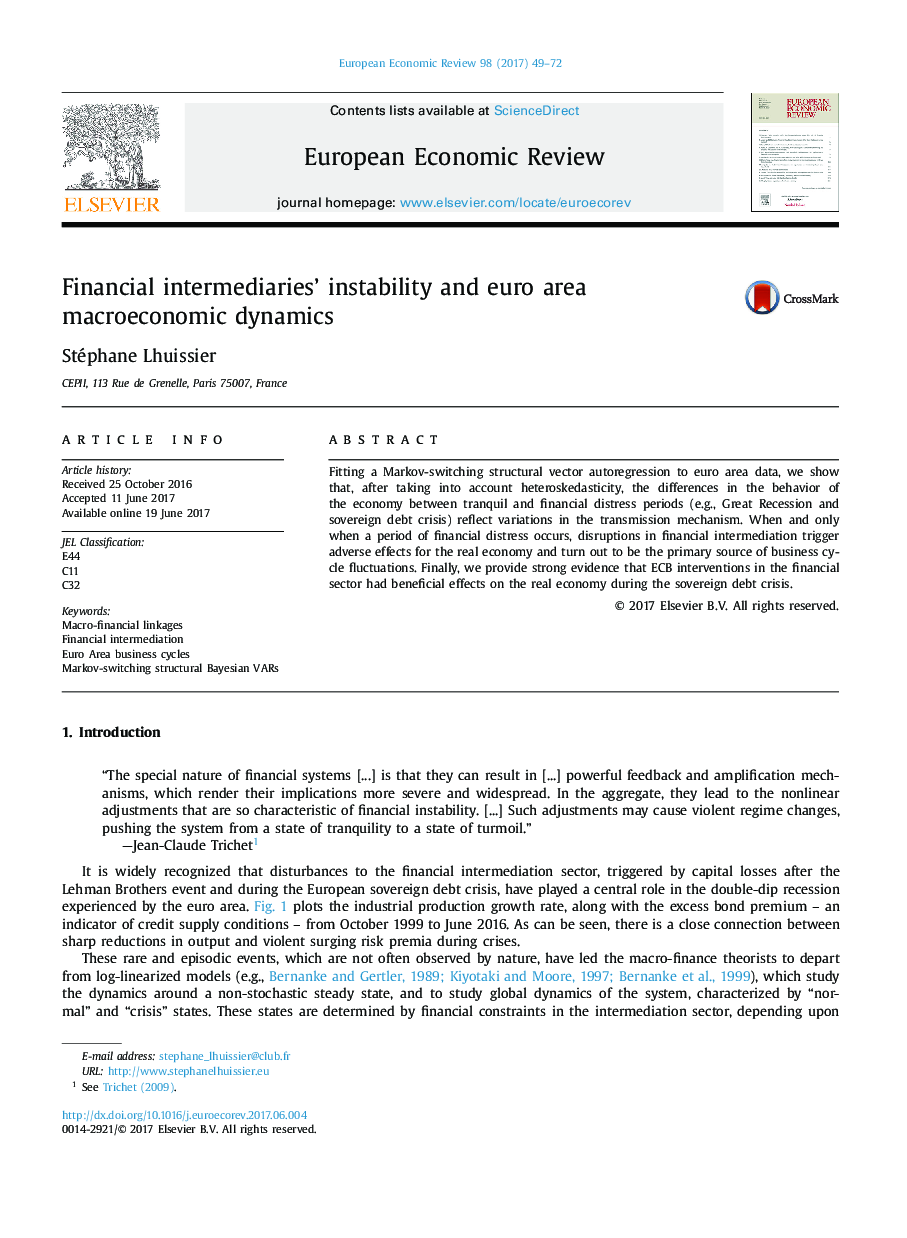| Article ID | Journal | Published Year | Pages | File Type |
|---|---|---|---|---|
| 5066272 | European Economic Review | 2017 | 24 Pages |
Abstract
Fitting a Markov-switching structural vector autoregression to euro area data, we show that, after taking into account heteroskedasticity, the differences in the behavior of the economy between tranquil and financial distress periods (e.g., Great Recession and sovereign debt crisis) reflect variations in the transmission mechanism. When and only when a period of financial distress occurs, disruptions in financial intermediation trigger adverse effects for the real economy and turn out to be the primary source of business cycle fluctuations. Finally, we provide strong evidence that ECB interventions in the financial sector had beneficial effects on the real economy during the sovereign debt crisis.
Related Topics
Social Sciences and Humanities
Economics, Econometrics and Finance
Economics and Econometrics
Authors
Stéphane Lhuissier,
